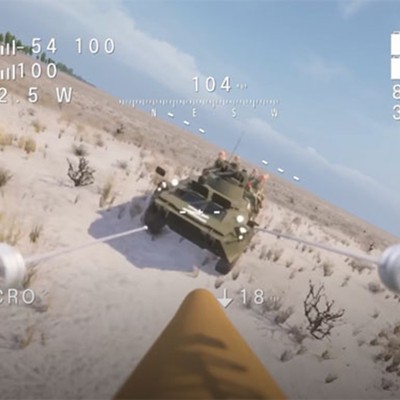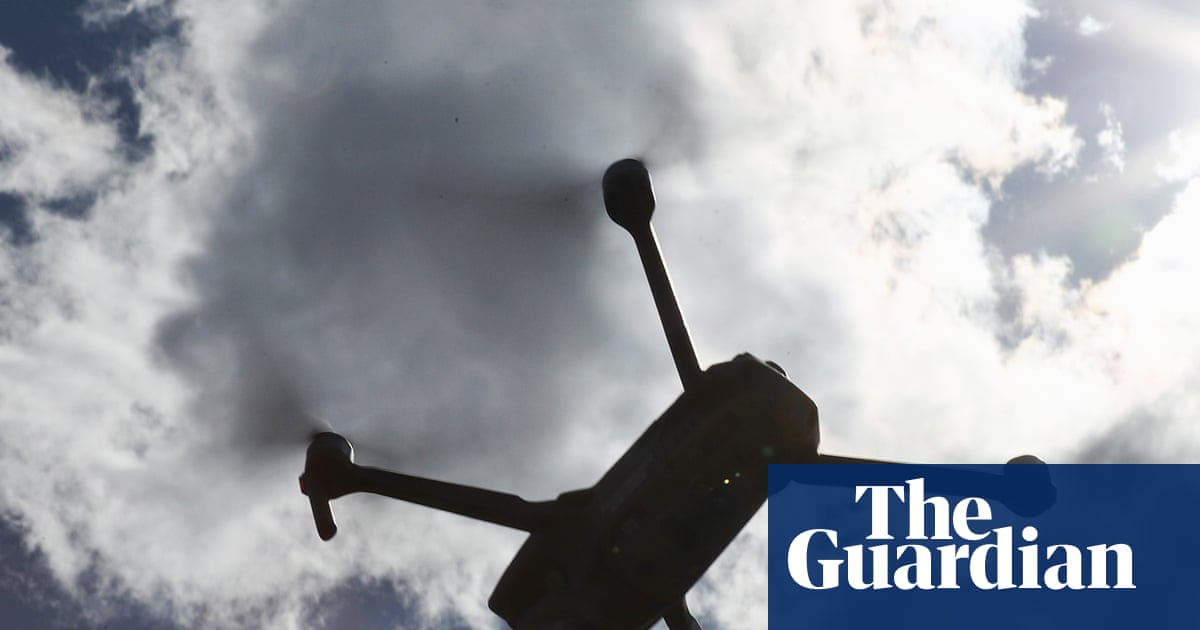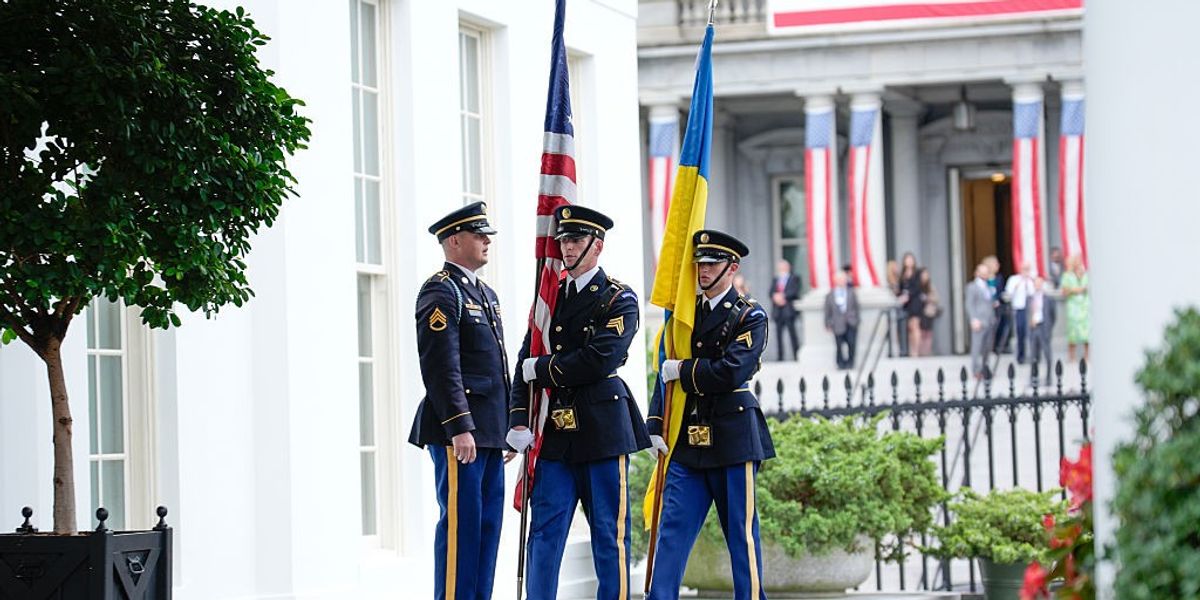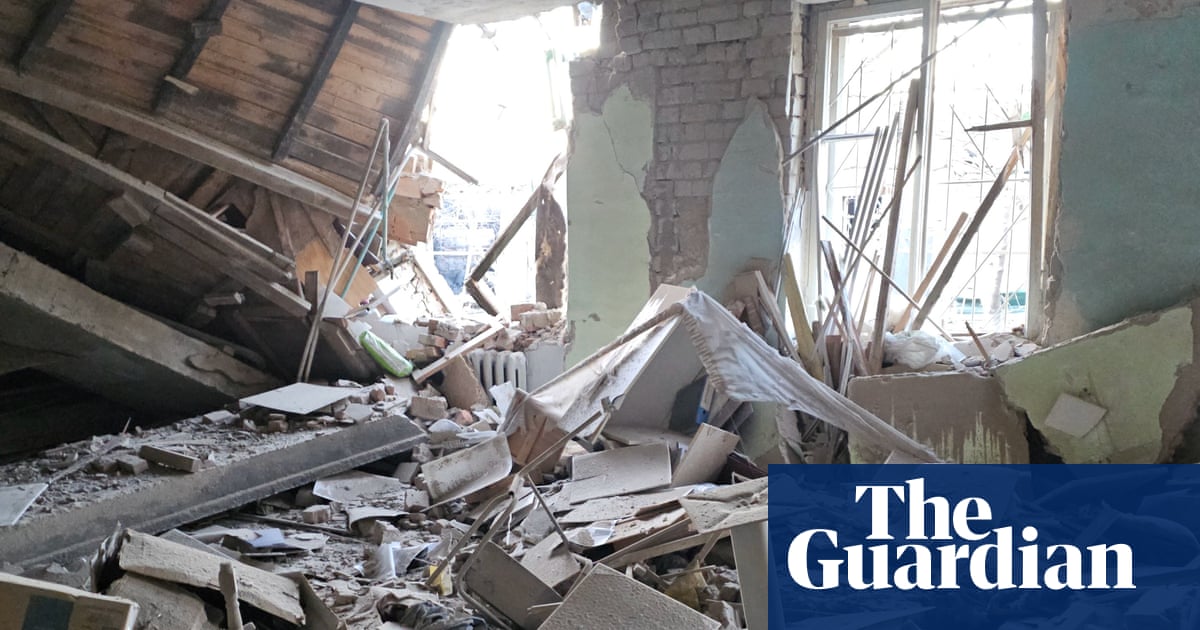#drone-warfare
#drone-warfare
[ follow ]
#ukraine #civilian-casualties #russia-ukraine-war #energy-infrastructure #ukraine-conflict #fpv-drones
World news
fromTruthout
3 weeks agoDecades of Global Drone War Made Trump's Caribbean Killing Spree Possible
U.S. drone strikes off Venezuela killed civilians in a double-tap attack; senior leadership embraces escalation, disregards law and proportionality, normalizing lethal force beyond battlefields.
fromBusiness Insider
1 month agoUkraine's ground robots are filling less than 1% of drone missions despite surging popularity
"At the current stage of the war, it is unmanned aerial vehicles that provide about 60% of all strikes on enemy targets," Syrskyi wrote. The military chief said that in November alone, Ukrainian uncrewed aerial vehicles, or UAVs, carried out over 304,000 missions, striking or destroying roughly 81,500 targets. "Over the past six months, this indicator has been constantly growing," Syrskyi added. Meanwhile, Ukrainian uncrewed ground vehicles, or UGVs, carried out 2,000 missions in the same timeframe, he said.
Miscellaneous
Miscellaneous
fromwww.theguardian.com
1 month agoWhat choice do we have?': no end in sight for Ukraine's war-weary frontline troops
Ukrainian infantry endure prolonged, claustrophobic frontline survival underground, quietly holding positions under constant drone threat while strategic peace proposals demand untenable concessions.
Tech industry
fromBusiness Insider
1 month agoUS defense giants are fighting to write drone warfare's future. Billions of dollars are at stake.
Startups and defense primes are competing to supply the Pentagon with faster, cheaper and scalable drone and counter-drone technologies amid multibillion-dollar investments.
Miscellaneous
fromBusiness Insider
1 month agoUkrainian soldiers say Russian strike drones are flying smaller drones into battle like an 'aircraft carrier'
Russia uses Molniya medium-sized drones to transport and deploy small FPV quadcopters and explosives, extending FPV operational range and strike depth.
Careers
fromBusiness Insider
1 month agoRussia is trying to hit Ukrainian helicopters and other aircraft midair with Shahed drones, deputy defense chief says
Russia is using operator-controlled Shahed drones near front lines to target Ukrainian aircraft midair, testing new tactics to suppress Kyiv's air defenses.
fromBusiness Insider
1 month agoRussia's adding cameras to its Shahed drones so it can catch Ukrainian interceptors approaching from behind
Russia has been adding rear-view cameras to some of its Shahed-type drones, allowing operators to see Ukrainian interceptors approaching from behind and take evasive action, a senior defense official told Business Insider. Lt. Col. Yurii Myronenko, Ukraine's deputy minister of defense for innovation, said Russia is "constantly testing" new deep-strike weapons, including modifying its Shahed-type drones and fielding new models. "Some Shaheds have already been equipped with rear-view cameras to detect and respond to our interceptors," said Myronenko, a former drone unit commander.
Miscellaneous
fromBusiness Insider
1 month agoRussian infiltration teams are exploiting bad weather to sneak past Ukrainian lines
Lt. Col. Yurii Myronenko, Ukraine's deputy minister of defense for innovation, said that drones are responsible for strikes on roughly 90% of all targets struck on the battlefield and have made large-scale armor assaults extremely challenging. But drones alone are not enough to hold the line and stop the enemy from breaking through, he said. Dense fog and other inclement weather provide ideal cover for Russian infiltration tactics.
Careers
fromwww.thelocal.fr
1 month agoZelensky in Paris to seek air defence help for Ukraine
Zelensky's visit is part of a brief tour of his western allies that saw him seal an energy deal with Greece on Sunday and will include a visit to Spain on Tuesday. The Ukrainian leader has said that "a major deal with France" will be announced soon, but it was not known if that would be finalised in his talks with President Emmanuel Macron. The French presidency said Macron would "put French excellence in the armaments industry field at the service of the defence of Ukraine".
Miscellaneous
fromwww.aljazeera.com
2 months agoRussia-Ukraine war: List of key events, day 1,341
Russian drone attacks on the Ukrainian capital, Kyiv, early on Sunday killed at least three people and wounded 29 others, according to Ukrainian Minister of Internal Affairs Ihor Klymenko. The wounded included seven children, Klymenko said. Russian attacks also killed a 63-year-old man in the southeastern Zaporizhia region on Sunday and one person in the eastern Kharkiv region on Saturday night, the Kyiv Independent reported on Sunday, citing local officials.
World news
Black Lives Matter
fromwww.aljazeera.com
2 months agoHow Russia's new tactics pose new winter threat to Ukraine
Modified Russian drones increasingly breach Ukrainian defenses to damage energy infrastructure, targeting power stations, transmission, heating systems and gas facilities, threatening electricity and heat supplies.
fromBusiness Insider
2 months agoNorth Korean soldiers are flying drones for Russia and directing strikes in Ukraine, Kyiv says
From Kursk, North Korean units are using drones to conduct aerial reconnaissance missions over the neighboring Sumy region in Ukraine, identifying troop positions and supporting Russian follow-on strikes against identified targets, Kyiv said. Ukraine has "intercepted communications between North Korean drone operators and personnel of the Russian army," Kyiv shared in a statement published to the Telegram messaging app. It said that North Korean drone operators "adjusted the fire of multiple launch rocket systems against Ukrainian positions."
World news
fromwww.aljazeera.com
2 months agoHow successful is Ukraine's gas war' against Russia?
Every day I see cars that ran out of fuel and were left on the curb, Ayder, a resident of Simferopol, Crimea's administrative capital, told Al Jazeera. His car runs on natural gas, which is more available these days. There are long lines and fistfights at gas stations after a limit of 20 litres (5.3 gallons) per car was introduced, he said, withholding his last name out of fear of punishment for talking to foreign media.
Black Lives Matter
Careers
fromBusiness Insider
2 months agoA Ukrainian startup is turning to AI to outsmart the Russian ambush drones blowing up supply trucks
Explosive-laden ambush quadcopters now threaten Ukrainian supply convoys, prompting AI-driven real-time drone scouting and route-clearance solutions to detect mines and hidden threats.
fromBusiness Insider
3 months agoFormer US Air Force drone sensor operator says there's no video game on Earth that can prep you for the job
My first strike was January 28th, 2013, at 6:49 in the morning. It ended up being a cave in the middle of nowhere, and there was a handful of people there that they wanted us to take out.
US news
World news
fromThe Nation
3 months agoIf the World Can't Stop the Genocide Against Us, Let It at Least Carry Our Stories
Gaza civilians face relentless aerial and ground attacks, repeated displacement, massive civilian casualties, targeted threats to journalists, and severe shortages of fuel and shelter.
fromwww.mediaite.com
3 months agoZelensky Mourns Charlie Kirk and Murdered Ukrainian Refugee During UN Speech
We also mourn the Ukrainian woman, Iryna Zarutska. She was brutally killed with a knife here in America, the very country where she was seeking refuge from Russia's war. And almost every day, when we open the news, we see headlines about violent attacks happening all around the world. Most of it is done with weapons. People are already used to it.
World news
Germany news
fromLondon Business News | Londonlovesbusiness.com
3 months agoGermany preparing for 1,000 wounded troops a day in the event of war with Russia - London Business News | Londonlovesbusiness.com
Germany is preparing medical capacity to treat about 1,000 wounded soldiers per day in anticipation of a large-scale NATO-Russia conflict.
Careers
fromBusiness Insider
3 months agoUkraine's front-line road nets are catching Russian drones, but gaps leave vehicles exposed to ambush
Anti-drone netting converts vulnerable roads into protective tunnels for Ukrainian convoys, but Russian drone pilots continue to develop methods to breach and exploit the defenses.
fromwww.aljazeera.com
3 months agoRussia-Ukraine war: List of key events, day 1,296
Here are the key events on day 1,296 of Russia's war on Ukraine. Here is how things stand on Friday, September 12: Anti-aircraft units downed seven Ukrainian drones headed for Moscow early on Friday, according to the Russian capital's mayor Sergei Sobyanin. Russian forces have taken control of the settlement of Sosnivka in Ukraine's Dnipropetrovsk region, Russia's Defence Ministry said on Thursday.
Miscellaneous
Miscellaneous
fromLondon Business News | Londonlovesbusiness.com
3 months agoFootage shows the moment Ukrainian forces attack a Russian Black Sea Fleet ship - London Business News | Londonlovesbusiness.com
Ukrainian forces used a drone and special forces to disable a rare Russian MPSV07 multifunctional ship near Novorossiysk, a high-value $60 million target.
fromwww.aljazeera.com
4 months agoRussia-Ukraine war: List of key events, day 1,287
Russian drone attacks and shelling killed three people and injured five others in Ukraine's Dnipropetrovsk region, Governor Serhiy Lysak wrote on Telegram. Two people were killed in Russian attacks on the Polohivskyi district, as Russian forces launched 578 attacks on 18 settlements in Ukraine's Zaporizhia region, Governor Ivan Fedorov said. Separate Russian attacks also killed one person in Kherson, one person in the Kyiv region and one person in Donetsk, local officials reported, according to the Kyiv Independent news outlet.
Miscellaneous
fromBusiness Insider
4 months agoHow paratroopers are tackling drone warfare as the US Army bets big on the tech
US Army soldiers are tearing apart drones, printing out new parts, and flying their own creations into live-fire drills - a crash-course in the messy, fast-paced world of drone warfare. The Army has launched a sweeping push to weave drones into combat across the force. For now, that work can look improvised and experimental, with soldiers moving quickly and sharing feedback as they go. In line with the Army's significant transformation initiative, over the past nine months, the Bayonet Innovation Team of the 173rd Airborne Brigade, part of the Army's Southern European Task Force, Africa, has been building, flying, and reconfiguring drones. In exercises in Lithuania, Tunisia, and Germany, the brigade used first-person view drones to strike static and moving targets, 3D-printed parts to test new designs, and artificial intelligence-enabled software to refine tactics.
US news
fromBusiness Insider
4 months agoUkraine says it hit a Russian missile ship with flying explosive-packed drones
The Ukrainian military said on Thursday that it carried out a drone strike on a Russian warship capable of launching cruise missiles, marking the latest attack on Moscow's wounded navy. Ukraine's military intelligence agency, the HUR, said in a statement that it targeted a Buyan-M-class (or Project 21631) corvette operating in the Sea of Azov, a body of water that separates Russia from occupied Ukraine.
World news
fromBusiness Insider
4 months agoParatrooper who scored the US Army's first drone-on-drone kill says it felt like a fight out of 'Star Wars.'
Earlier this month at a training exercise, 1st Lt. Francesco La Torre from the 173rd Airborne Brigade flew a first-person view drone carrying a Claymore mine into a fixed-wing uncrewed aerial vehicle, according to a new Army press release. La Torre piloted the drone towards the UAS as another member of his team armed and detonated the payload. Then La Torre looked up from his end-user device (EUD) and saw the fixed-wing drone fall out of the sky.
US news
Miscellaneous
fromLondon Business News | Londonlovesbusiness.com
4 months agoBritish forces preparing for war in Ukraine with 'intense training not seen since before Afghanistan'
September British Army recruits will receive trench, drone, chemical and medical training and adopt six-person strike teams to prepare for Peace Support Operations in Ukraine with EU partners.
Miscellaneous
fromwww.theguardian.com
4 months agoRussia accuses Ukraine of strike on nuclear plant in wave of drone attacks
Ukrainian drone attacks struck multiple Russian regions, damaged an auxiliary transformer at the Kursk nuclear plant, sparked fires, and triggered widespread interceptions and monitoring.
fromwww.mediaite.com
4 months agoFox News Guest Warns Putin Has Proven His Word Is Meaningless and He Doesn't Care if More Russians Die'
Every meeting, every minute this meeting continues is a great thing towards peace, right? However, my initial take is that Putin's word can never be trusted.
US politics
World news
fromwww.theguardian.com
4 months agoThe enormity of the attacks on Ukraine is impossible to grasp. Let me show you the horror of a single day | Oleksandr Mykhed
Kyiv experiences repeated air raids with missiles and drones targeting civilian infrastructure, creating a pervasive sense of fear and helplessness.
fromThe New Yorker
5 months agoDexter Filkins on Drones and the Future of Warfare
Since the end of the Cold War, most Americans have taken U.S. military supremacy for granted. We can no longer afford to do so, according to reporting by the staff writer Dexter Filkins. China has developed advanced weapons that rival or surpass America's; and at the same time, drone warfare has fundamentally changed calculations of the battlefield.
US politics
fromTechCrunch
5 months agoUkrainian hackers claim to have destroyed servers of Russian drone maker | TechCrunch
The hacktivist group BO Team claimed responsibility for a cyberattack on Russian drone maker Gaskar Group, disrupting their operations by destroying key systems and data.
Russo-Ukrainian War
[ Load more ]
























